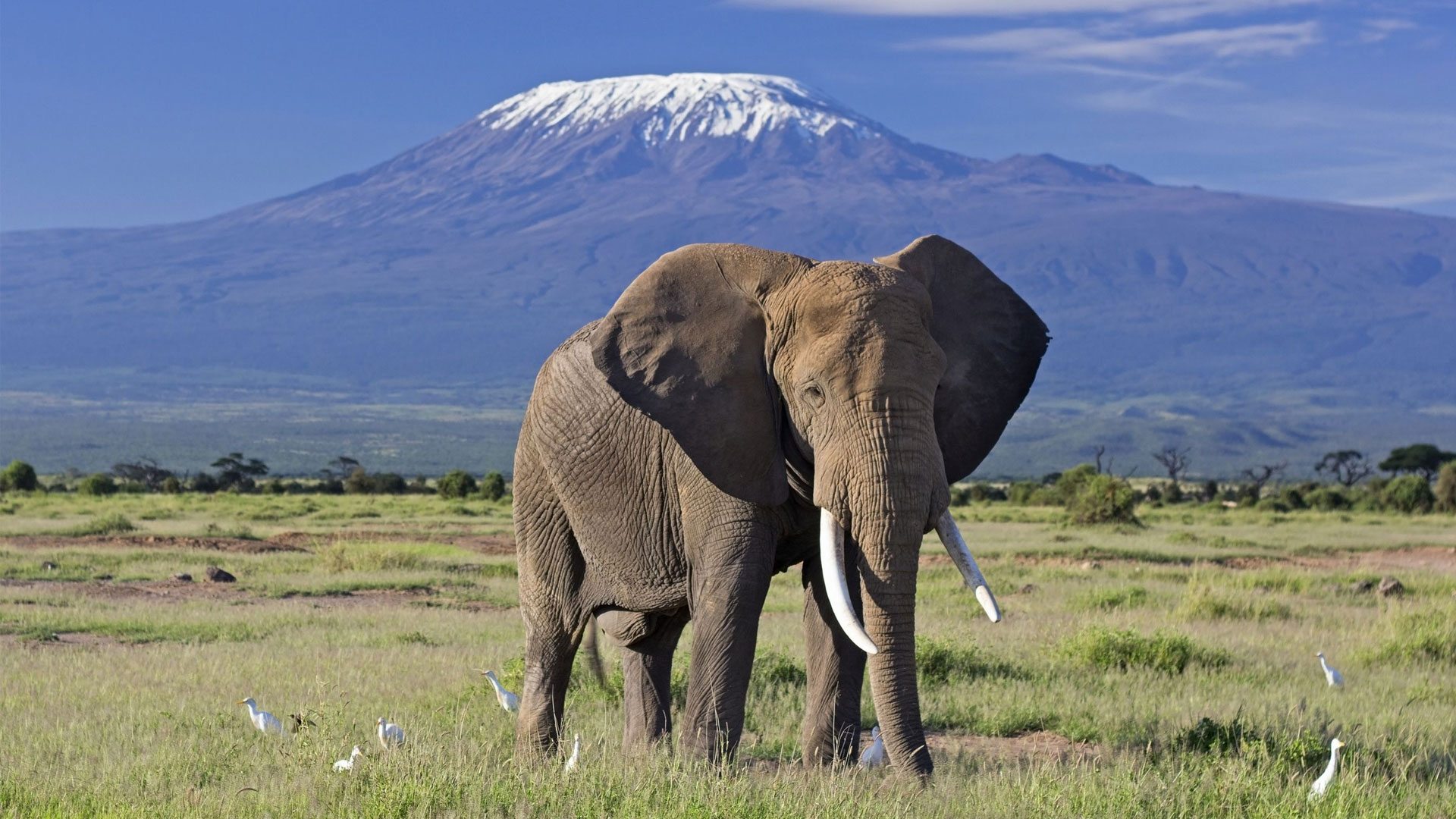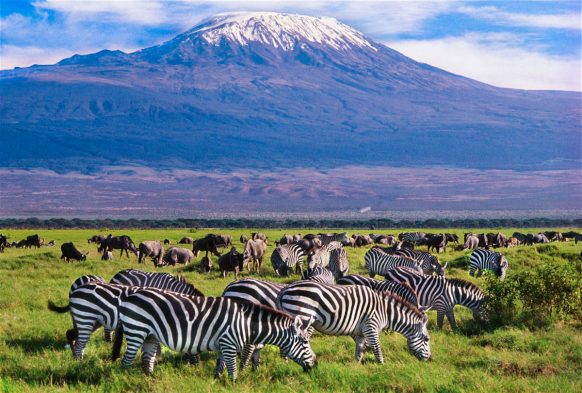
Amboseli
Where Elephants Roam Free, Kilimanjaro Reigns Supreme
About Amboseli
Picture yourself standing on endless golden plains as massive herds of elephants drift gracefully across the landscape, their silhouettes framed against the snow-capped peak of Mount Kilimanjaro. Amboseli National Park is Africa's premier destination for intimate elephant encounters, and it's an adventure that feels surprisingly accessible to everyone. [1]
Amboseli covers 392 square kilometers at the core of an 8,000 square-kilometer ecosystem that straddles the Kenya-Tanzania border, making it one of the most iconic safari destinations on the continent. [1] The park is famous for being the best place in Africa to get close to free-ranging elephants among other wildlife species, with opportunities to see up to fifty elephant herds in a single safari. [5] This isn't just a wildlife viewing experience—it's a chance to witness nature's most magnificent creatures in their natural habitat, and our travel specialists can help you craft an itinerary that captures every magical moment.
What makes Amboseli truly special is its combination of dramatic natural features. The park sits on an endless underground water supply filtered through thousands of feet of volcanic rock from Kilimanjaro's ice cap, which funnels into clear water springs in the heart of the park. [1] This creates a landscape of big skies and far horizons combined with swampy springs and dry, dusty earth trampled by hundreds of animals—a visual symphony that photographers and wildlife enthusiasts dream about. [1]
Beyond the elephants and mountain views, Amboseli offers authentic encounters with the Maasai people, rich cultural tourism opportunities, and exceptional bird watching in its wetlands. [5][7] The park hosts four members of the Big Five, including lions, buffalo, and leopards, alongside zebras, giraffes, warthogs, hippos, and countless bird species. [5] Whether you're a first-time safari-goer or a seasoned wildlife enthusiast, Amboseli delivers unforgettable moments. Let our experienced travel agents help you discover this incredible adventure and handle all the complex planning details.
The park was established in 1974 and was designated a UNESCO World Heritage Site in 1991 to protect and preserve its unique species and ecosystems. [4] Located in Kajiado County in southern Kenya, approximately 365 kilometers (226 miles) southeast of Nairobi, Amboseli is easily accessible and can be explored within a manageable timeframe. [4] The park's compact size—just 392 square kilometers—means you can experience exceptional wildlife viewing even in a single day, though most visitors find themselves wanting to stay longer once they arrive.
Accommodation options range from luxury tented camps to budget-friendly options, with prices averaging $279 per night. [3][8] Properties like Elewana Tortilis Camp, Tawi Lodge, and Amboseli Cultural Camping consistently receive exceptional guest ratings, with many visitors praising the stunning Mount Kilimanjaro views and warm hospitality. [3] Our local partnerships ensure you'll find accommodations that match your travel style and budget, whether you're seeking a romantic escape or a family adventure.
Game viewing in Amboseli is best during early morning and evening hours when animals are most active. [4] The park's diverse habitats—open plains, acacia woodland, thorn scrub, swamps, and marshlands—create varied ecosystems that support different wildlife species throughout the year. [4] During the dry season from June to October and January to March, wildlife viewing is particularly excellent as animals congregate around water sources. [18]
Visiting Amboseli means experiencing authentic African wilderness while supporting conservation efforts and local Maasai communities. [7] The park's unique charm lies in its ability to offer unforgettable safari experiences in an inspiring natural setting, making it a must-visit destination for anyone looking to experience the magic of the Kenyan wilderness. [7] Adventure doesn't have to be complicated—let our travel specialists handle the details while you focus on creating memories that will last a lifetime.
Park entry fees for non-residents are $90 for adults and $45 for children per day, with payment processed through the Kenya Wildlife Service's online portal. [5] Professional guided tours and vehicle charges are available separately, and all accommodations provide excellent facilities including swimming pools, restaurants, and cultural activity options. [2][6] Whether you're interested in game drives, guided walks, bush meals, cultural visits, or balloon safaris, Amboseli offers activities for every interest and fitness level.
The best time to visit depends on your interests and travel style. The dry season offers the clearest wildlife sightings and easiest road access, while the wet season brings lush green landscapes and exceptional birdwatching opportunities. [16][17] Our travel experts can help you choose the perfect timing for your adventure, considering weather patterns, wildlife migration, and your personal preferences. Contact our team today to start planning your Amboseli safari—your adventure awaits, and it's easier than you think to make it happen.
Top Experiences
Early morning game drive to witness elephant herds moving across the plains with Mount Kilimanjaro in the background
Sunset photography session capturing the snow-capped mountain turning golden in fading light
Hot air balloon safari offering aerial views of wildlife and landscape
Guided Maasai cultural walk learning about traditional pastoralism and wildlife coexistence
Bush meal experience dining under acacia trees while observing wildlife
Night game drive spotting nocturnal animals like hyenas, jackals, and owls
Birdwatching expedition in the park's swamps and wetlands
Visit to Maasai communities learning about traditional crafts and daily life
Photography safari with professional guides positioning you for optimal wildlife shots
Sundowner experience enjoying drinks while watching the sun set over the Amboseli plains
Key Highlights
Best place in Africa for close encounters with free-ranging elephants
Iconic Mount Kilimanjaro backdrop visible from throughout the park
Compact 392-square-kilometer size allowing excellent wildlife viewing in limited time
Eight-thousand-square-kilometer ecosystem spanning Kenya-Tanzania border
Perennial water springs sustained by Kilimanjaro's glacial meltwater
Multiple distinct habitats supporting diverse wildlife species
Rich Maasai cultural heritage and community tourism opportunities
Established in 1974, UNESCO World Heritage Site since 1991
Accessible from Nairobi with multiple entry gates and transportation options
Year-round destination with distinct dry and wet season experiences
Photo Gallery

Getting There
Travel Tips
Plan a Trip to Amboseli
Let our experts design a custom itinerary featuring Amboseli and more
Plan Your Safari
